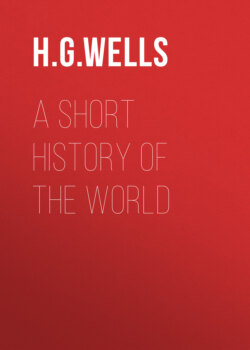Читать книгу A Short History of the World - H. G. Wells - Страница 74
SPECIMEN OF NEOLITHIC POTTERY
Dug up at Mortlake from the Thames Bed
Brit. Mus.
ОглавлениеTwelve or fifteen thousand years ago, in all the warm and fairly well-watered parts of the Old World these Neolithic human communities, with their class and tradition of priests and priestesses and their cultivated fields and their development of villages and little walled cities, were spreading. Age by age a drift and exchange of ideas went on between these communities. Eliot Smith and Rivers have used the term “Heliolithic culture” for the culture of these first agricultural peoples. “Heliolithic” (Sun and Stone) is not perhaps the best possible word to use for this, but until scientific men give us a better one we shall have to use it. Originating somewhere in the Mediterranean and western Asiatic area, it spread age by age eastward and from island to island across the Pacific until it may even have reached America and mingled with the more primitive ways of living of the Mongoloid immigrants coming down from the North.
Wherever the brownish people with the Heliolithic culture went they took with them all or most of a certain group of curious ideas and practices. Some of them are such queer ideas that they call for the explanation of the mental expert. They made pyramids and great mounds, and set up great circles of big stones, perhaps to facilitate the astronomical observation of the priests; they made mummies of some or all of their dead; they tattooed and circumcized; they had the old custom, known as the couvade, of sending the father to bed and rest when a child was born, and they had as a luck symbol the well-known Swastika.
If we were to make a map of the world with dots to show how far these group practices have left their traces, we should make a belt along the temperate and sub-tropical coasts of the world from Stonehenge and Spain across the world to Mexico and Peru. But Africa below the equator, north central Europe, and north Asia would show none of these dottings; there lived races who were developing along practically independent lines.
[1] The term Palæolithic we may note is also used to cover the Neanderthaler and even the Eolithic implements. The pre-human age is called the “Older Palæolithic;” the age of true men using unpolished stones in the “Newer Palæolithic.”
